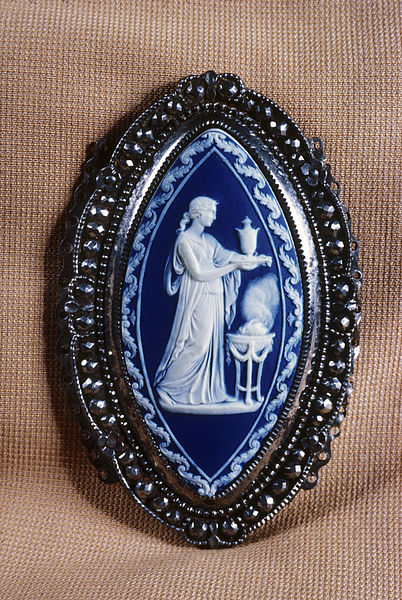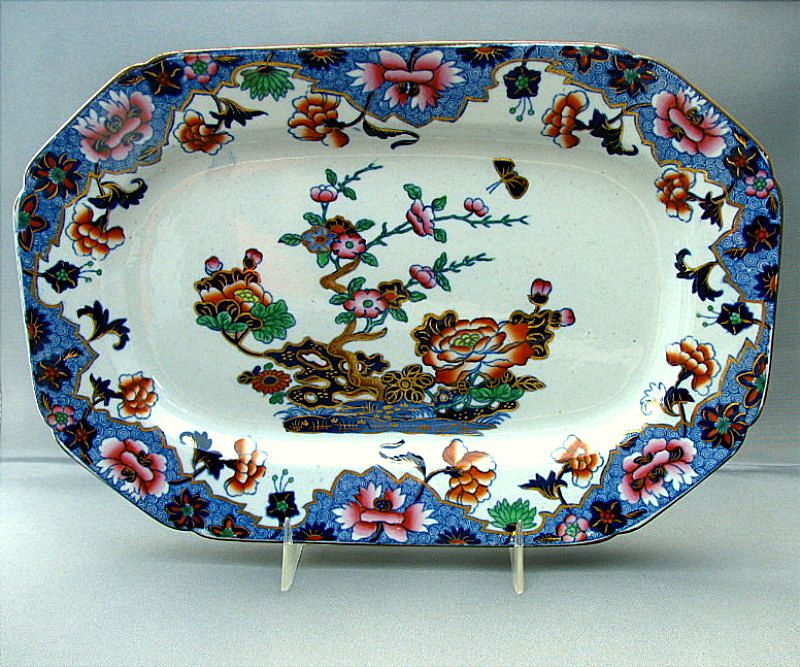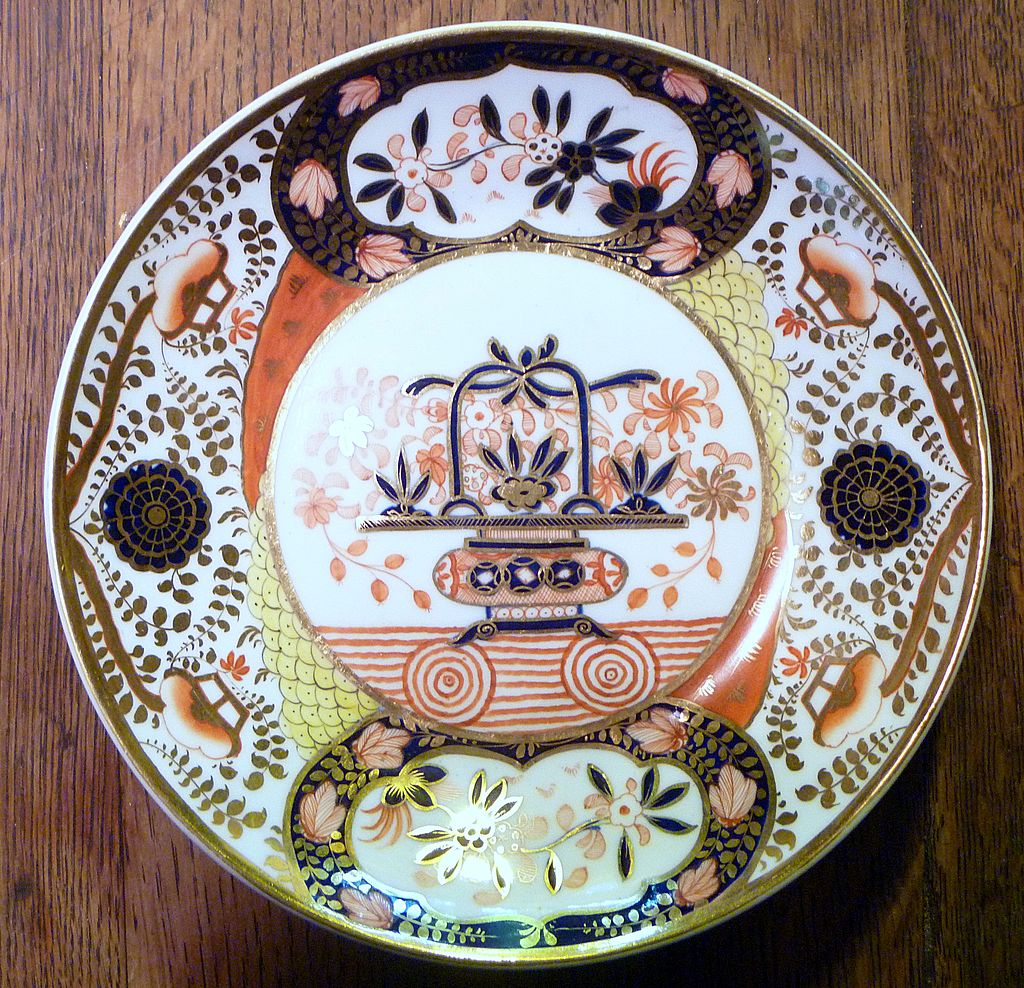Does Mass Production and Industrialisation Automatically Mean Ugliness?
 A look at British china and porcelain from the 18th and 19th centuries might suggest otherwise Since the period of the industrial revolution in the mid-17th century and in the 19th century when it took hold in society, I would contend along with quite a few other I think, that the culture has generally been in decline. But does this mean that the first is the cause or even a contributing factor to the decline? It is assumed by many to be the case, and we do, in my opinion, see clear signs of a decline in some areas of the culture at this time (especially so in the case of liturgical art and music). But I am not convinced that mass production or industrialisation are primary causal factors. I have always felt that the underlying design is the most important factor in the beauty of objects. There is nothing inherently less mass-producable or expensive about beautiful design. Beauty and elegance in design can be as cheap as ugliness. If we had designers who understood how to create beautiful objects, then mass production allows for the creation of lots of beautiful and affordable objects. This is a good thing, isn't it? Of course, if designers create ugliness, then mass production will churn lots of ugly objects of the production line too, without being the cause of it.
A look at British china and porcelain from the 18th and 19th centuries might suggest otherwise Since the period of the industrial revolution in the mid-17th century and in the 19th century when it took hold in society, I would contend along with quite a few other I think, that the culture has generally been in decline. But does this mean that the first is the cause or even a contributing factor to the decline? It is assumed by many to be the case, and we do, in my opinion, see clear signs of a decline in some areas of the culture at this time (especially so in the case of liturgical art and music). But I am not convinced that mass production or industrialisation are primary causal factors. I have always felt that the underlying design is the most important factor in the beauty of objects. There is nothing inherently less mass-producable or expensive about beautiful design. Beauty and elegance in design can be as cheap as ugliness. If we had designers who understood how to create beautiful objects, then mass production allows for the creation of lots of beautiful and affordable objects. This is a good thing, isn't it? Of course, if designers create ugliness, then mass production will churn lots of ugly objects of the production line too, without being the cause of it.
Also, just because two events, the increase in mass production and the decline in some parts of the culture coincide, it doesn't mean that one causes the other. Correlation does automatically mean cause and in this case, the correlation doesn't seem to me to to be as strong as one might at first suspect.
In his book the Spirit of the Liturgy Pope Benedict XVI talks of a break between the culture of faith and the wider culture. The question is which declined first and which is the most powerful influence on that decline? In my assessment, it is the liturgy that is the primary influence on the culture of faith, and without a Catholic culture of faith
If industrialisation and mass production were the primary causes, (or more generally economic and social conditions) one would expect the negative effects since the 18th century to be most pronounced when the laissez faire, liberal economics were are their most present, which is this period of the 18th and especially the 19th century. However, that is not what I see. The mundane art and music of the period is still strong in many respects and it was not even uniformly bad yet in the realm of the sacred - sacred architecture flowered in the forms pioneered by the English Catholic convert WA Pugin. The general picture seems to be one of a slow decay in the liturgical forms first, with the wider culture following later.
The period when the decline of culture really accelerated is not this period, but the one following it, the 20th century. Traditional ideas of proportion and harmony were not finally and universally rejected in architecture until after the Second World War, for example. Yet in the 20th century, economic and social conditions improved and the supposed excesses of the capitalist system were curtailed by regulation in the West.
A look at some mass produced objects of the period would help of course. Recently I was reading TS Ashton's economic history of the period The Industrial Revolution (Oxford University Press, 1968). He remarks at one point that the Wedgwood and Spode factories were founded in the 18th century and produced china and porcelain right through this period. So here I give you pottery from the factories of Wedgwood and Spode. This are made in Staffordshire in England and the factories are situated in the Midlands, right at the heart of where the British industrial revolution took place.
You can decide for yourself. Do you think they are ugly mass produced objects? If we think they are beautiful this suggests that mass production is not inherently bad. Given the improvements in the techniques of mass production, one would expect that degree to which a product reflects faithfully the original design is even greater than it was at this time.
It is worth making the point also that Ashton discusses at length the living and working conditions of the poor during this period and compares them with the period before - the early 17th century and the 16th century. It is interesting that in his assessment things generally improved. He makes the point that although there were poor working and living conditions by today's standards, they weren't uniformly poor, and says that workers houses were as likely to be well made and well proportioned as not. Also he notes that people at the time were quick to respond to injustice and so laws protecting the conditions of workers were introduced from the early 19th century onwards. We should have a look at the workers cottages that were made in Britain at the time. There are plenty of Victorian terraces which are now sought after places for the well to do in the best parts of town - for example in Chelsea and Fulham. But that is another blog posting for the future.
Here is some china for you. When I was young, my parents had a period when they collected antique china and porcelain from this period and seeing the Spode particularly reminds of me china they used to possess. These works have passed the test of time for beauty that I always like to apply in trying to assess the beauty of, for example, a work of art. Has it transcended its own time? Do people today still see this a good and beautiful or is appreciation of it subject to the vagaries of fashion and so only temporary? The antique markets of the world suggest the former.
Photgraphs from top: Wedgewood designed by Lady Templeton, c1790-1800; Spode mid-19th century; Wedgewood vase, 1790; Spode vase 17th century; Spode 19th century plate.



